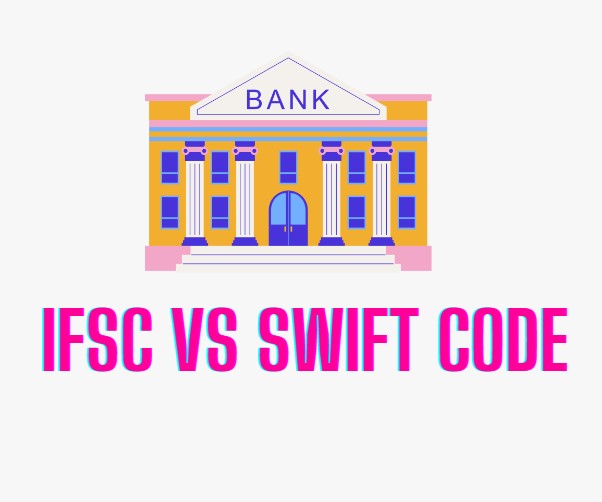Key Difference Between IFSC and SWIFT code

Swift Code and IFSC Code are codes used to identify banks uniquely and make fund transfers to their right destination. In this article, we will facilitate to understand the key differences between the IFSC and the SWIFT Code.
IFSC Code
IFSC code is used when fund transfers between banks occur within India's geographical boundaries. It is an alphanumeric code, that recognizes the bank branch taking part in the electronic fund transfer system. IFSC stands for Indian Financial System Code.
Define IFSC Code Structure
Let's understand the structure of the IFSC code. The code is a combination of 11 alphanumeric characters and the combinations are as below:
- The First four characters represent the bank code.
- The 5th character is 0.
- Last six characters are branch codes.
SWIFT Code
On the other side, SWIFT stands for Society for Worldwide Interbank Financial Telecommunication, and this is a cooperative non-profit organization, fully owned by its member banks. SWIFT code is used when the transfer between two banks happens internationally.
Define SWIFT Code Structure
The SWIFT code is a combination of 8 or 11 alphanumeric characters. The code structure is provided below.
- The first 4 characters show the bank code. (Letters only, i.e. AAAA)
- And, the next 2 characters represent the country code. (Letters only, i.e. BB)
- Next, 2 characters represent the location code (letters and digits, i.e. 1C)
- And the final 3 characters are optional and represent branch code (letters and digits (DDD)
Key Differences between IFSC and SWIFT Code
The below table depicts the major and key differences between the IFSC Code and the SWIFT Code.
| IFSC Code | SWIFT Code |
|---|---|
| Used primarily in India for identifying bank branches in electronic fund transfers within the country. | Used globally to identify banks and financial institutions in international transactions. |
| Composed of 11 characters: 4 letters for the bank code, 1 digit for the reserved code (often zero), and 6 digits for the branch code. | Composed of 8 or 11 characters: 4 letters for the bank code, 2 letters for the country code, 2 letters or digits for the location code, and 3 optional characters for the branch code. |
| Managed by the Reserve Bank of India (RBI). | Managed by the Society for Worldwide Interbank Financial Telecommunication (SWIFT). |
| Primarily used for domestic transactions within India. | Used for international transactions across the globe. |
| Example: SBIN0001234 | Example: DEUTDEFFXXX |
| Essential for NEFT, RTGS, and IMPS transactions within India. | Essential for wire transfers and international money transfers. |
| Usually required along with the account number of the recipient for transactions. | Required along with the International Bank Account Number (IBAN) of the recipient for transactions. |
| Helps in routing funds to the specific branch of the bank within India. | Helps in identifying the bank’s location, country, and specific branch for international transfers. |
| More commonly used by individuals and businesses for domestic fund transfers. | More commonly used by banks and financial institutions for international fund transfers. |
Hope you are now able to understand the differences between the IFSC and SWIFT Code.
You may also like:
The story of IIT Village of Bihar
Over 40 students from Bihar's Patwa Toli have cleared JEE Main 2025, with many trained at a free coaching centre run ...
Top Career Options After 12th: Courses, Exams, Colleges, Fees & Salary Packages
Explore top career options with detailed information on entrance exams, admission process, top co...
